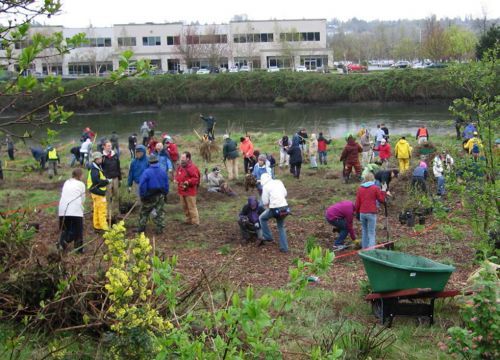An Estuary in the Shadow of Seattle
What makes river water flow in one direction in the morning and change direction in the afternoon? Tides. Update: It’s been announced that a proposed settlement was reached with Seattle to resolve its liability for injured natural resources. Seattle has purchased restoration credits from Bluefield Holdings Inc., a company that develops restoration projects. The city’s credit purchase totals approximately $3.5 million worth of restoration. This is the first natural resource damages settlement to fund restoration through the purchase of credits by a restoration development company. For more details: https://www.justice.gov/opa/pr/city-seattle-agrees-natural-resource-damages-settlement-using-new-market-based-approach
Main challenges for restoring the Duwamish:
Sept. 27, 2016 - Where the Duwamish River meets Puget Sound in Washington state this shift of water flow happens daily. The Duwamish pours into the salty waters of Puget Sound, making it Seattle’s downtown estuary. The powerful tides that fill and drain the sound push and pull on the Duwamish causing a shift in directions at the river's estuary. This estuary does not look like the estuaries from high school text books. It no longer has a wide delta where the freshwater river fans out to meet the salty ocean. Instead, it looks like a channelized waterway. Almost all of the Duwamish estuarine wetlands and mudflats have been lost to dredging or filling for industrial purposes. Restoring the Duwamish‘s estuary is a massive challenge—requiring government agencies, industry, and the public to work together. I am happy to report a significant step forward in this collaboration. NOAA recently produced key answers to some tough questions, based on lessons we learned as we worked on this restoration effort: What works the best to restore this highly urban and developed river and estuary? What are some of the key obstacles we encountered?
- Dealing with costs and challenges of existing contamination
- Preventing erosion of new restoration
- Keeping newly-planted vegetation alive—geese and other wildlife love to eat newly planted restoration sites
Key lessons learned for successful restoration:
- Plan for uncertainty: the most common issue for restoration in urban areas is discovering unexpected challenges, such as sediment contamination during construction.
- Allow for ongoing maintenance: Restoration isn’t over just because a project is complete. To ensure the long-term success of restoration efforts, continued stewardship of the site is necessary and should be included in project planning.
- Get the biggest bang for your buck: When companies conduct cleanups of their sites, it is most cost effective to conduct restoration at the same time. River with grid strung above it.
The challenges and recommendations are only a snapshot of what can be found in the NOAA report, Habitat Restoration in an Urban Waterway: Lessons Learned from the Lower Duwamish River. While the Duwamish estuary may look nothing like it did historically, it is important to always be reminded that it is still full of life. From salmon to kayakers to industry, the estuary serves a key role in the Seattle community. Learn more about what we are doing to restore the Duwamish River. See video: A River Reborn: Restoring Salmon Habitat along the Duwamish River.
 An official website of the United States government.
An official website of the United States government. 

